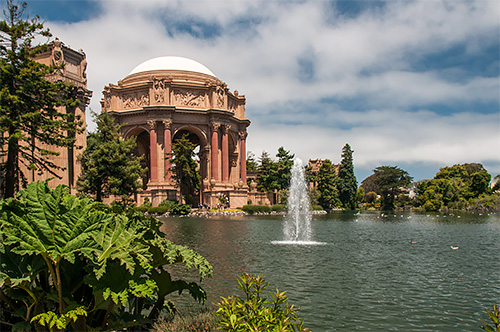Photo Corners headlinesarchivemikepasini.com
![]()
A S C R A P B O O K O F S O L U T I O N S F O R T H E P H O T O G R A P H E R
![]()
Reviews of photography products that enhance the enjoyment of taking pictures. Published frequently but irregularly.
Photography Does Not Come In A Bottle


12 July 2013
If only you could bottle that," one uncle or another would say. "You could make a fortune." We dream of fortunes but think in bottles. Nice, hermetically sealed, little things that can float on oceans to faraway destinations or sit in the basement with a prestigious label gathering dust.
But photography, like any other art, does not come in bottles.
We were reading The Era of Constant Photography this morning, in which Jason Kottke reflected on recent essays by photographer Clayton Cubitt and Rex Sorgatz. That would be Cubitt's On the Constant Moment and Sorgatz's The Case of the Trombone and the Mysterious Disappearing Camera.
"Slightly different takes," he sums up, "but both are sniffing around the same issue: photography not as capturing a moment in realtime but sometime later, during the editing process."
Cute.
THE EDITING PROCESS
We've been careful -- especially recently -- to go a bit beyond our favorite caption style that reports the camera settings: f-stop, aperture and ISO. Why? Because half the work of the images we present on this site (in contrast to what we used to do as a gallery image for a camera review) is done in post-processing.
So we mention what Raw editor we used, what filter, what manipulations we felt the image needed. And none of that was required by the scene as we saw it the moment it "flashed before our eyes." It was required by how we felt about the image.
But Ansel Adams spent a lifetime arguing against the naive view that photography was merely mimetic.
Look again at that Palace of Fine Arts shot in yesterday's story. The phrase "decisive moment" doesn't apply. Nor, in Cubitt's less adroit phrase, "the creation of art through the curation of time."

And, indeed, we took our time framing that shot. We wandered around a bit, left and right, before setting on that particular angle. That "decisive moment" lasted half an hour, at least.
Taking even longer would be the still life subject. Francesca Woodman's stuff, for example. Not exactly what Cubitt and Sorgatz and Kottke are all aflutter about.
There's more than one "editing process." Manipulating a Raw file and correcting lens distortion isn't the one Kottke is talking about.
VIDEO CURATING
What they are aflutter about is distilling an image from video capture. That's the "editing process" Kottke is referring to, not Adobe Camera Raw.
They see this as a technological trump of the still camera's lucky shot. And they regard the still camera as a sort of awkward wood and leather prosthesis of another age.
Not so cute.
It turns out though, as we've been learning over the last few days, that distilling an image from a video sequence is a lot less rewarding in some aspects than working on a Raw file in Adobe Camera Raw.
The story of our wedding video project required more than a few stills culled from video. In one case, we actually took a frame between frames flooded with the preflash and full flash of one of the still photographer's shots. So we were sneaking around frame by frame.

But the camera -- with the limitation of a constant shutter speed and restricted bit-depth -- captured much less data than our stills at the same event. And that gave us a much smaller ballpark to play in. In one case (the bride dancing in near darkness), we had to resort to a filter that emulated Polaroid SX70 film to create an image we liked.
That's a limitation obvious to the still photographer who knows the rewards of working with Raw files. But limitations are what art comes in.
LIMITATIONS
Even Henri Cartier-Bresson (who came to disavow the phrase "decisive moment") profited from the limitations of his medium.
His camera settings were often merely fortuitous. The "wrong shutter speed" as he climbed down a staircase captures the street below him crisply as a bicycle flashes by in a blur.
And what was Ansel Adams doing all those years in Yosemite shooting in black and white? Some Cubitt or Sorgatz might have clued him in to the existence of Kodachrome, no?
No. He was reveling in the limitations. He was expressing himself. He was mapping tones that were not in the scene to the music in his eyes. He called it visualization to prove his images marched to a different drummer than what he saw.
THE MISTAKE
These two examples suggest there isn't just one way to play the photography game. There's isn't just one alternative to the GoPro Hero School of Modern Time Curation.
Because photography, like any other art, does not come in bottles.
Of course, that's why we can't wag our finger at what Cubitt and Sorgatz are getting at either. They describe a way to manage "the curation of time" dropped into the hands of anyone with a smartphone that's just as valid -- and exciting -- as working with a Raw file.
An additional way to photograph our world, not a replacement for all the other approaches to photography as an art. You know, the one Kottke calls "the old way."
The video approach has its own pluses and minuses, too. Its own advantages and limitations. Or it wouldn't be an art. There would be no option for the artist to navigate meaningfully. The technology would be making all the decisions. Having all the fun.
You could put it in a bottle. And make a fortune.
But it wouldn't be art.